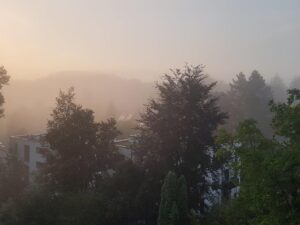
Putting a REAL value on trees
By John Fitzsimmons
There are those who love trees simply for their beauty and splendour. There are people who regard trees as being ‘in the way’ of some more immediate perceived want or need, or who dislike living with trees in close proximity for cultural or aesthetic reasons. Between these various points lies a whole spectrum of tree values. So, let’s revisit some of the things trees do for us and why (and how) they should be valued.
For a long time during our country’s development and building, trees were deemed expendable, or at least of lesser value, in the face of our broadscale expansion for living quarters, industry, and food production. This was despite trees providing us with food, clothing, shelter, and tools for millennia. Then, for a while, many of us embraced trees – planted more of them, embraced them, cared for them, and preserved them.
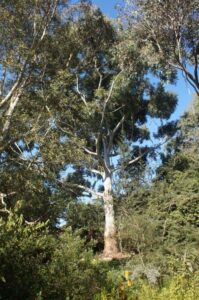
More recently, however, our trees have faced a new wave of pressure collectively driven by ‘growth’. ‘Growth’ can be used in the economic context but it’s also closely allied to population. Australia’s population passed 27 million earlier in 2024 and is growing by about one more every 47 seconds. Yet, for familiar reasons, our overall population density is still low by world standards (about 3/km2 overall). Nevertheless, the pressure on our finite tree population is growing. The consequences are enormous for not just our people but also impacts on biodiversity and wildlife habitat loss. The economic, environmental and social debate is swirling. But while our governments and regulators acknowledge the need for preservation, even expansion, of our tree population and canopy coverage, contrary forces don’t seem to baulk at negatively impacting it in the names of housing for a growing population and ‘badly needed infrastructure’.
Dr Hans Pieters, Program Director for Urban and Regional Planning at the University of South Australia, summarised: “Australian cities’ populations and spatial spread have been amongst the fastest growing in the world’s high-income countries, driven by the Baby Boomers’ family formation, rising immigration and people living longer. Increasing average home sizes and smaller building blocks have adversely affected the Urban Forest.”
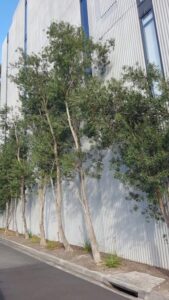
“Australia’s urban populations will be bigger, living more closely together, older, more ethnically diverse, and likely working more from home while also feeling the effects of climate change. These issues seem likely to compound to restrict urban forestry further when we need it most. Appropriate planning policy is needed to guide urban forest-focussed development to create liveable, sustainable communities,” he added.
As an observation, the process seems to be one step forward and two steps back of late. As Treenet has put it so simply over time: “It is challenging to address the total economic, social and environmental benefits of street trees because of the multiple roles and competing interests.”
Quoting Treenet again: “Urban development strategies are beginning to include the capital values of forests in policies and programs that modify tree stocks, qualities and distributions. Urban trees are more widely acknowledged as both productive capital stocks and components of public infrastructural systems. As ecological analogues of industrial capacity and physical infrastructure, urban trees are entering the central equations of urban growth, often with new definitions of what trees are and do.”
So, let’s look at revaluing our trees and re-stating some of the benefits. This is a minimal, undetailed summary.
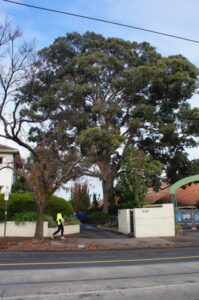
The air we breathe
Through the process of photosynthesis, trees absorb carbon dioxide and produce oxygen.
They also help reduce air pollution, removing both gaseous air pollution and some airborne particles. Large healthy trees remove up to 70 times more air pollution yearly than small healthy trees.
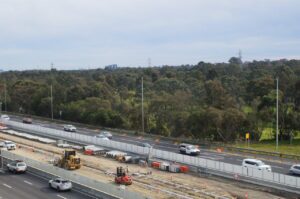
Liveability
Trees are highly effective at cooling our streetscapes and homes through shading and their evaporative effect. Research has found that up to 65% of the heat generated in full sunlight on a tree is dissipated by active evaporation from leaf surfaces. That makes things more liveable for humans (and animals) but also has the potential to save significant amounts of energy otherwise used for cooling.
Some research has demonstrated:
- up to 6oC lower ambient temperatures on treed sites.
- up to 20oC lower hard surface temperature under tree shade than in full summer sun.
- up to a 27% decrease in summer cooling costs with trees.
- up to 50% cooling energy savings with trees.
- up to 11oC lower room temperatures in uninsulated houses during summer from tree shade.
In one county in California, home to about 1.5 million people on 2500 square kilometres, it is estimated about 1,300 GWh (1GWh = 1,000,000 kWh) of electrical energy is used for air conditioning each year, at a retail cost of about US$105 million. The 6 million trees comprising the county’s urban forest save an estimated 157 GWh of air conditioning electricity due to shading and cooling effects; trees save residents approximately US$19.8 million annually. Those same trees absorb an estimated 1,457 tonnes of air pollutants annually (ozone, nitrogen dioxide, particulate matter) and reduce carbon dioxide emissions from power generation. An estimated 238,000 tonnes of CO2 are removed by the county’s urban forest each year.
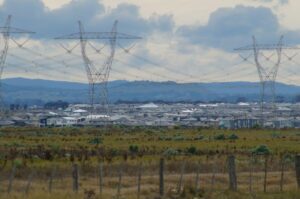
Overall, the effect is to help mitigate climate change. It is notable that that benefit can be quantified and valued.
Mitigating soil erosion and flood damage
- Trees can also prevent soil erosion and mitigate flood damage. The nature of tree root zones in terms of species selection and initial pre- and post-planting root zone management and irrigation can have significant benefits for the trees and the site. Poorly done, of course, there can be negative consequences.
Of course, all vegetation, especially trees, plays a major part in managing water throughout the soil profile and infiltration or runoff after heavy rain or flooding. Vegetation, including tree plantings, can add to topographic and/or drainage protections for buildings, amenities, and work sites. Research has suggested that for every 5% of tree cover area added to a community, runoff is reduced by approximately 2%, and that up to a 7% volume reduction in a six-hour storm flow has resulted from community tree canopies.
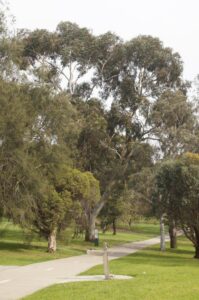
Habitat and biodiversity
Some people ‘don’t get’ the idea of wildlife habitat and biodiversity. In many cases, people simply were not exposed to a base education in science or biology. Maybe they should revisit a decades-old reference entitled The Web of Life. Suffice to say, biodiversity underpins all life on Earth and the shredding of this fabric as a result of species loss erodes the very foundation of our existence. Trees provide valuable resources and habitat for wildlife, and supports biodiversity from simple organisms, such as fungi and invertebrates, to shelter and more for higher predators. Their products include, directly and indirectly, sustenance for humans. A tree is not just a plant; it is a natural community and part of the broader ‘web of life’.
Wellbeing
Apart from their purely biological benefits, trees are also of great value to human wellbeing via their physical and aesthetic presence. No two are alike, with each species displaying an infinite variety of shapes, forms, textures, and colours throughout the seasons, and their sometimes surprisingly long lives. Trees have been described as having ‘monument-like qualities’.
These benefits have also been formally studied, identified, quantified, and empirically valued! The benefits are not just thought bubbles. One Australian study valued exposure to greenery saved $95 per person per year in mental health expenditure – around 33 million dollars per year in a city of 5 million people!
Values – hard dollars
There are many references and methods applied to the monetary value of trees. One Australian study suggested that having one or two trees on a residential block could save up to $480 per year (assuming annual household electricity usage for heating and cooling of 12,000 kWh at 20 cents/kWh).
At this time, residential property availability and prices are hot topics. The effect of greenery and trees on property values is a complex subject with significant variables, including state, climatic zone, postcode, street situation, size, age, construction method and setting – among many! It is generally agreed that a well-designed and implemented landscape will enhance a property’s value. But to what extent? One Australian study in Brisbane found that having up to 20% of a residential block with tree cover could result in about a 5% higher value than a bare block. In Melbourne, having “some” or “more” gardens and trees lifted values by 3% to 8%.

On the property website domain.com.au, Meg Caffin, principal of Urban Forest Consulting and board member of Arboriculture Australia, said: “Trees and plants do add value; people will pay extra money for that. The figures on how much range from 7-15% increase in value across different cities,” she explains. “The dollar power of plants and trees is due to a combination of factors, including the cost value of the tree or plant itself, the aesthetics and their function in reducing utility bills and thus saving you money.”
Even ten years ago, Burnley College researcher Greg Moore, on treenet.org, reported that the value returned to the City of Melbourne by its approximately 70,000 public trees alone would be more than $14 million per annum.
The City of Melbourne has produced a formula to help calculate the monetary amenity value of a tree in the city. “Where a public tree removal is approved by the Council’s arborist in relation to a development, the associated cost of the tree and its removal shall be paid by the property owner prior to the (tree’s) removal”.
The formula is: Value (V) = Basic Value ($) x Species(S) x Aesthetics
All images supplied by John Fitzsimmons
